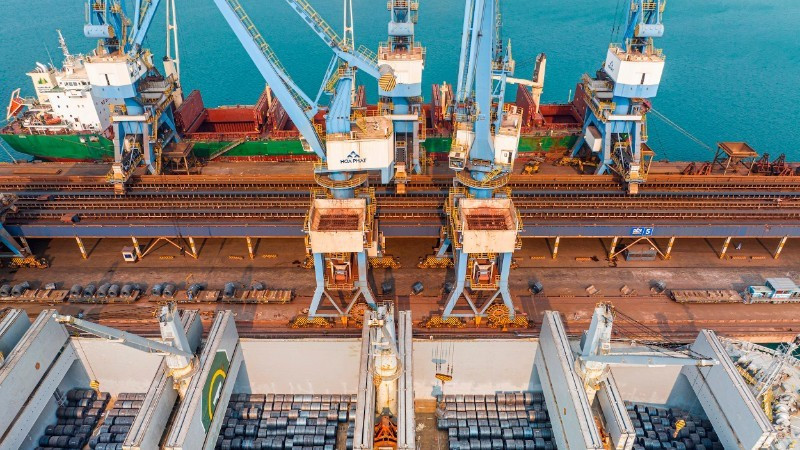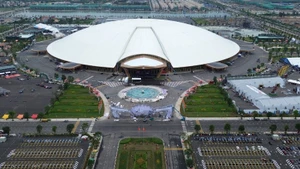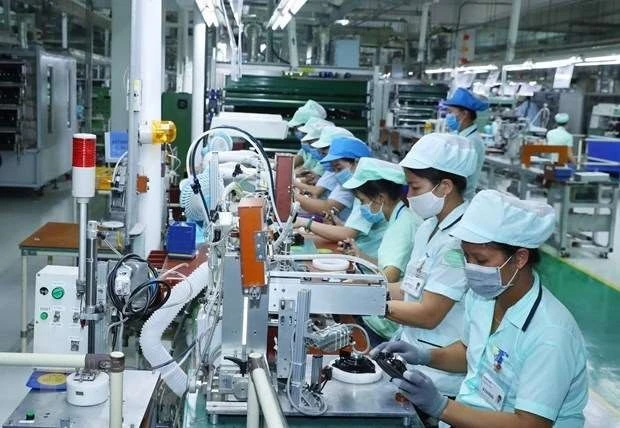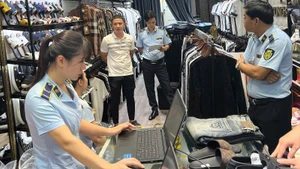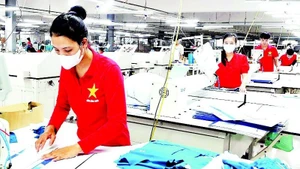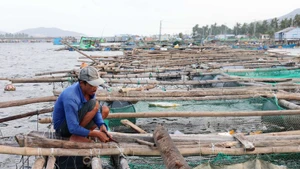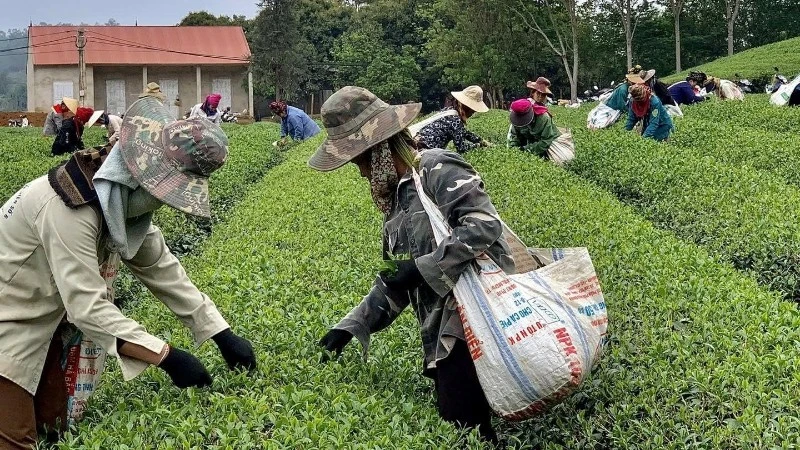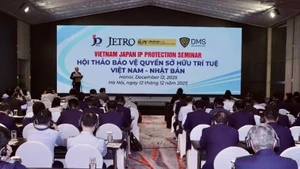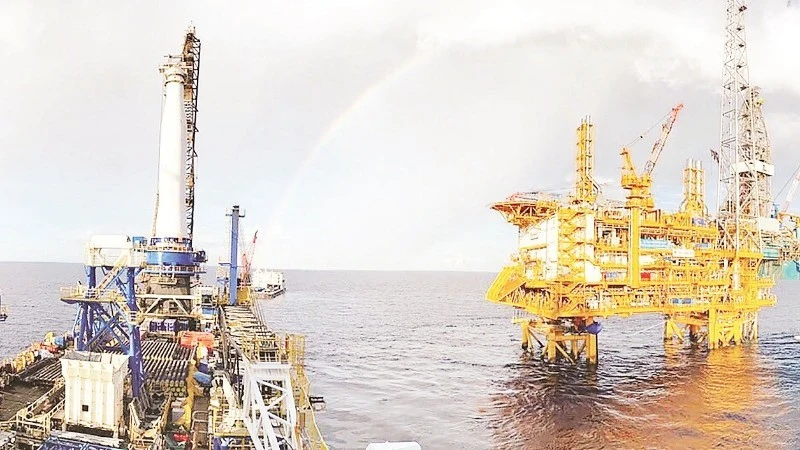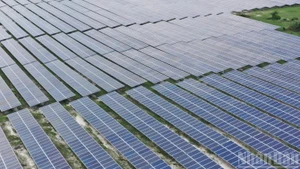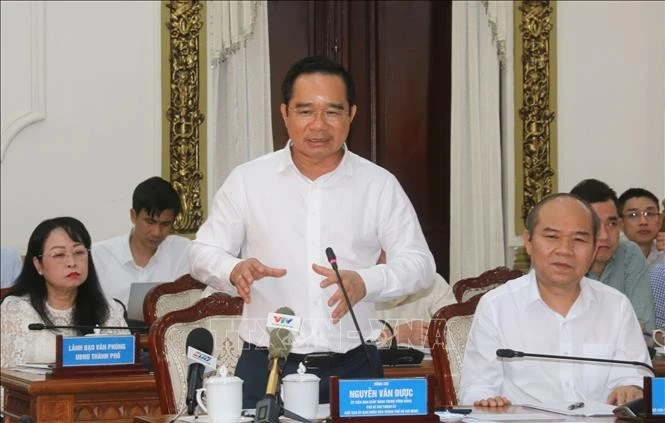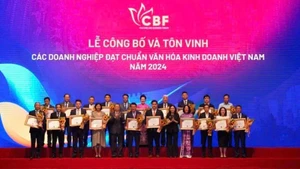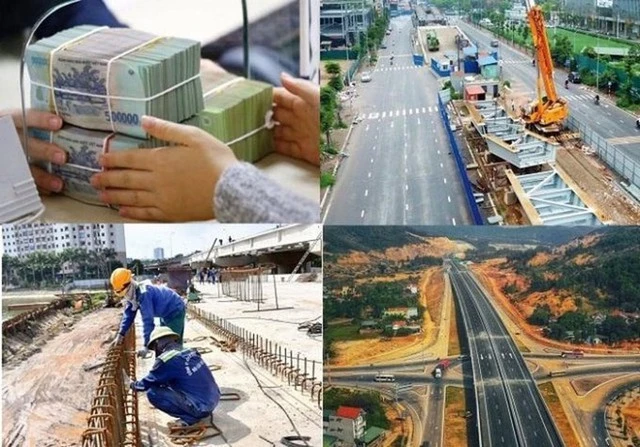The East–West economic corridor links the Dung Quat Economic Zone, the Bo Y International Border Gate, and the neighbouring countries of Laos and Cambodia, aiming to establish a cohesive marine–forest economic region and promote integrated and sustainable international trade development.
With its strengths in industrial crops such as rubber, coffee, macadamia, medicinal plants, and Ngoc Linh ginseng, the western mountainous area holds great potential for sustainable agricultural and commodity production.
The potential of the mountains and the advantages of the sea
Ia Dal Border Commune is home to large-scale rubber plantations with a total area of 21,810ha. Nearly 10,000ha of rubber are operated by enterprises under the Viet Nam Rubber Industry Group, the 15th Army Corps, and several private investors. With an annual output of about 20,000 tonnes of latex, this key crop generates substantial revenue for the locality and creates jobs with an average monthly income ranging from 7 to 12 million VND per worker.
According to Secretary of the Ia Dal Communal Party Committee A Khien, aside from key crops, the locality has attracted investment in numerous high-tech agricultural projects, including a 40,000-head beef cattle farm, a 200,000-head pig farm, a high-tech agricultural production zone, and hundreds of hectares of material forest plantations.
Additionally, nearly 60 farms and households have adopted advanced livestock farming methods, raising expectations for agricultural exports associated with large-scale raw material zones.
In the coming years, western mountainous communes will develop concentrated medicinal herb cultivation areas—about 4,500ha for Ngoc Linh ginseng and around 10,000ha for other medicinal plants. These raw material areas are tied to deep processing to create diverse herbal products for both domestic and international markets.
Secretary of Mang Ri Communal Party Committee Vo Sy Chung said the locality is expanding the cultivation of Ngoc Linh ginseng and medicinal plants within the community, encouraging residents to participate in production chains to diversify products and target exports.
While the western part of the province serves as a hub for industrial crops and medicinal herbs, the eastern region acts as a “gateway” for trade, with its synchronised transport network, deep-water ports, and major processing plants.
The synchronised transport system—from National Highway 1A to the Dung Quat deep-water port, economic zones, and industrial parks in the east—has become a vital outlet supporting the mountainous raw material areas in expanding economic development space. The eastern region is home to eight industrial parks covering more than 8,000ha. The 45,000ha Dung Quat Economic Zone is gradually forming clusters of factories specialising in the production and processing of medicinal herbs and agricultural products sourced from the western raw material region.
The newly formed Quang Ngai Province now has greater resources to advance key sectors such as industry, agriculture, pharmaceuticals, the maritime economy, and logistics—creating new opportunities for investors. “The connection between the western raw-material region and the eastern seaport system will enable investors to tap advantages and reduce production costs,” said Tran Thanh Dung, Director of Cao Nguyen High-Tech Agriculture Co., Ltd.
East–West connectivity and the aspiration to reach further
The general planning for 2021–2030, with a vision to 2050, of the former Quang Ngai and Kon Tum provinces identifies the East–West economic corridor as a driver for economic, cultural, and tourism growth, linking the East Sea/South China Sea with the Central Highlands and southern Laos, and northeastern Thailand. This vision has become clearer as the Quang Ngai–Kon Tum expressway was added to the national road network plan, strengthening interregional connectivity.
Developing this strategic connectivity axis will enable the newly merged Quang Ngai Province to achieve balanced growth across its coastal, mountainous, border and island areas. This serves as a solid foundation for Quang Ngai to become an economic hub and a key trade gateway in the region. Entering a new era, the province is accelerating the development of oil refining, metallurgy, mechanical engineering and supporting industries.
At the same time, the province prioritises attracting investment in industries such as electronics, artificial intelligence, biotechnology, semiconductors and energy; promotes the processing of agricultural, forestry and fishery products linked with large-scale, concentrated raw material zones; and improves irrigation and dyke infrastructure to support agricultural production.
From this economic corridor, the province also promotes interregional tourism—developing Ly Son Special Zone into a marine tourism centre and Mang Den Tourism Area into a hub for ecological and resort tourism.
Quang Ngai is strengthening linkages between the Dung Quat Economic Zone, Bo Y Border-Gate Economic Zone, and Chu Lai Open Economic Zone to form a major industrial centre for both the region and the country.
Secretary of the Bo Y Communal Party Committee Dinh Cao Cuong noted that the commune enjoys a favourable geographic location and infrastructure connections, situated on key transport routes such as National Highway 14C, National Highway 40, and the Ho Chi Minh Road. As the junction point of Viet Nam, Laos, and Cambodia, it is well-positioned for international trade and regional connectivity within the East–West economic corridor. From the border-gate area, goods can be transported to Dung Quat deep-water port (Quang Ngai) and Chu Lai Port (Da Nang) at competitive costs.
The province will gain new momentum and ample room for development, with its strategic geographical location, interregional connectivity, ecological and economic diversity, expanded administrative scale, and greater resources—creating strong potential for the growth of key economic sectors.
Nguyen Hoang Giang, Deputy Secretary of the Quang Ngai Party Committee, Chairman of the Provincial People’s Committee
The province gives priority to investing in strategic infrastructure and interregional connectivity. Key transport projects such as the Quang Ngai–Kon Tum Expressway, the upgrade of National Highway 24, and the expansion of Dung Quat Port are being accelerated to strengthen production, logistics and export capacity.
At the same time, the construction of Mang Den and Ly Son airports, along with new expressways linking the Central Highlands, will enhance both international and regional connectivity. These initiatives aim to expand economic zones, raise industrial park occupancy rates, and attract new investment to maximise the advantages of the province’s expanded development space.
Chairman Nguyen Hoang Giang affirmed that the province will gain new momentum and ample room for development, with its strategic geographical location, interregional connectivity, ecological and economic diversity, expanded administrative scale, and greater resources—creating strong potential for the growth of key economic sectors.
The locality is strengthening cooperation with provinces along the East–West Economic Corridor, leveraging Dung Quat Port to professionalise logistics and attract investment from international enterprises within the global supply chain.
The province places particular emphasis on deep processing of Ngoc Linh ginseng, agricultural products, and renewable energy to increase product value and form interprovincial production chains. It prioritises high-tech agriculture and medicinal plant development, focusing on expanding Ngoc Linh ginseng cultivation to 6,000ha and building advanced processing plants to raise product value and contribute to sustainable poverty reduction.
